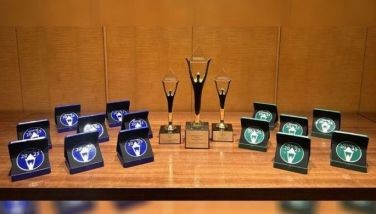A tale of two churches
CBCP president and Lingayen Archbishop Socrates Villegas made headlines a few days ago when he mentioned in an article that long and boring sermons are unfair to God and the people.
Amen!
Priests who bore churchgoers with their dull and redundant homilies are easily one of the reasons why many Filipino Catholics feel that the age-old Church is no longer relevant in today’s modern world.
But is the Catholic Church really as stagnant as it seems?
I pondered on this while vacationing in the beautiful island of Santorini, Greece. Santorini has hundreds of churches that all look alike, painted with the same clean blue and white. The predominant religion there is Eastern Orthodox and because of their uniform exteriors, it is impossible to tell from the outside if a church is Catholic or Orthodox.
The way I understand it, the Eastern Orthodox Church is essentially similar to Roman Catholicism in the sense that the two were the same until doctrinal differences resulted into the Great Schism.
The chance to observe a different version of Catholicism certainly piqued my curiosity. I sheepishly pushed the large wooden church doors and was wary of guards who might inquire what I was doing inside. Fortunately, there was a Mass going on, and everybody was focused on the services.
Observing the Orthodox faithful was like going back to the medieval times. Bearded priests wore long black robes. Female worshippers were veiled and clothed head to toe. What sounded like Gregorian chants echoed in the hallways and the smell of incense pervaded the place of worship. I went around the church and noticed the same statues of Christ and the Blessed Virgin along with their many saints. Compared to ours, their statues looked sad and stern, contributing to the reverent gloom one feels inside.
I noticed some devout people approaching each of the 20 or more statues, kissing the hands, knees, and feet of the images. They then kneel and gesture what looks like the sign of the cross for several times. All this ritual is repeated for each and every statue inside the church. The sense of piety inside was, in my opinion only, very admirable but not to my liking.
Contrast this to the Sunday Mass I attended in Greece. Upon entering, we were welcomed with a smile by one of the choir members and though unable to speak English, he was insistent in handing out a piece of paper that turned out to be an English missalette. The priest came in smiling and looked keenly at everyone. He couldn’t speak English as well, but he was confident he’d make us understand what he was about to say. He called out two people in their 20s, a man and a woman, to the altar. The man translated the message of the priest in English while the woman translated it in Italian. The two volunteers seemed to enjoy being of service to the congregation. At times, they’d find the priest speaking too much that they’d end up translating a lengthy sentence to “what?†The parishioners laughed every so often at the dynamics of the three people in front of the altar.
The homily, as translated by the young man, was about love and acceptance. We couldn’t really understand most of the words as the young man had a very thick Greek accent. But the aura we felt inside the parish was more than enough to communicate the gospel’s message that in this church, everybody is welcome and united in God’s love.
With two translations of three sermons (one at the start, one during the homily and one at the end), the Mass lasted a little more than an hour. But nobody seemed to mind. My aunt, who doesn’t go to Mass anymore, said she appreciated how the priest was able to make the Holy Eucharist very personal.
Right then and there was God’s teachable moment for me. Having had the experience of observing two twin religions, I was amazed at how much change our Church has underwent over the centuries. From what I observed, it was clear how our Church has stressed inclusivity. How they have relaxed the rules to make parishioners feel more welcome and at ease while worshiping and praying to God. How they have embraced the laity’s role in the Mass and set aside for the most part gender biases. How they have shifted their attention from worshipping sacred statues and images to focusing on expressing love and acceptance towards one’s neighbor. Our priests have sacrificed the high pulpits and the reverence and awe that came with it in order to be closer (but more vulnerable!) to the needs and worries of the flock they serve.
“Upon this rock I build my Church.†To many who have become jaded and disillusioned, this rock has been an obstinate stumbling block to many people living in the modern times. What is clear to me, however, is that like pebbles in a gentle stream, the Church has patiently let itself be formed and honed by the constant ebb and flow of modern times, but without sacrificing the foundations that constitute its very essence: the doctrine and traditions that have been handed over by Christ and His apostles.
How much has the Catholic Church changed over the years?
Stop looking at the edifice. Be attuned to what has changed by going inside one.




















